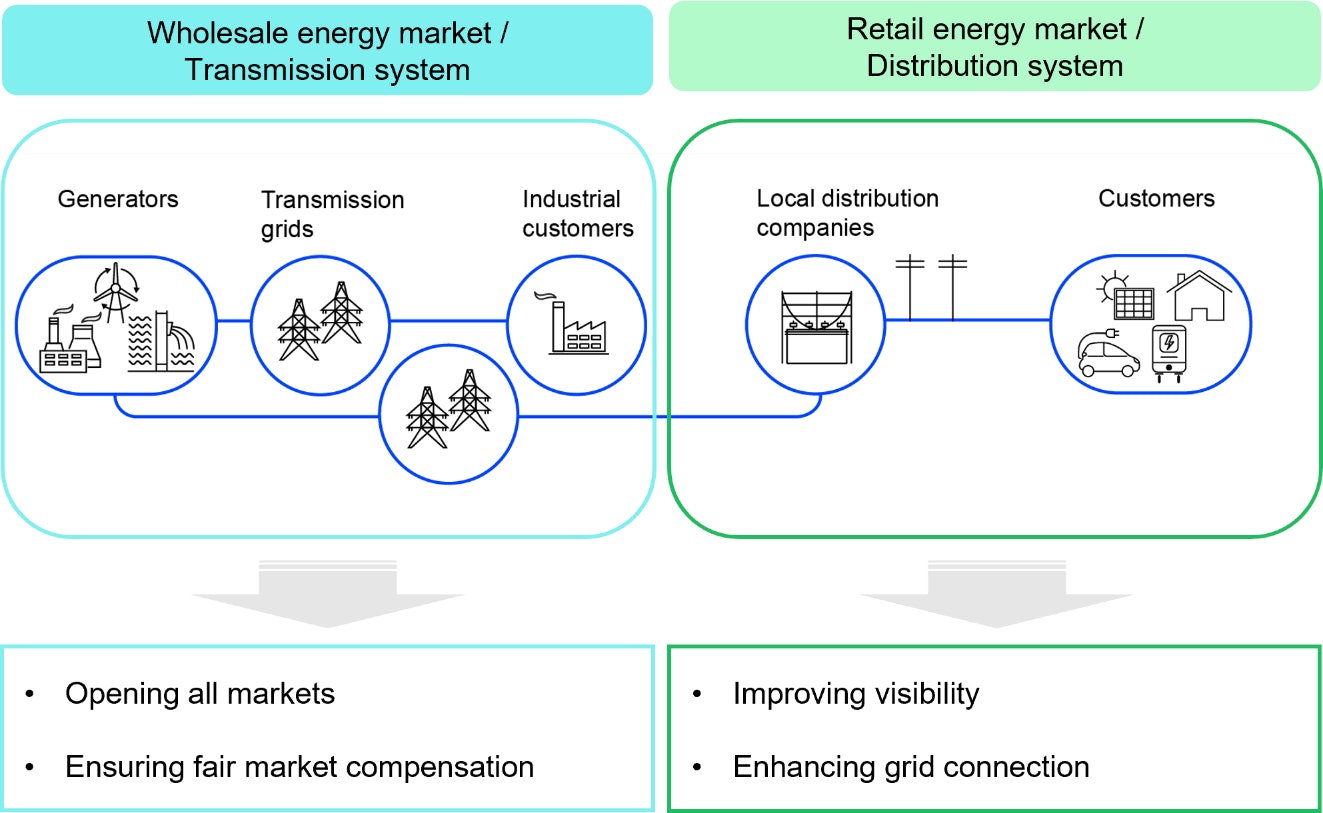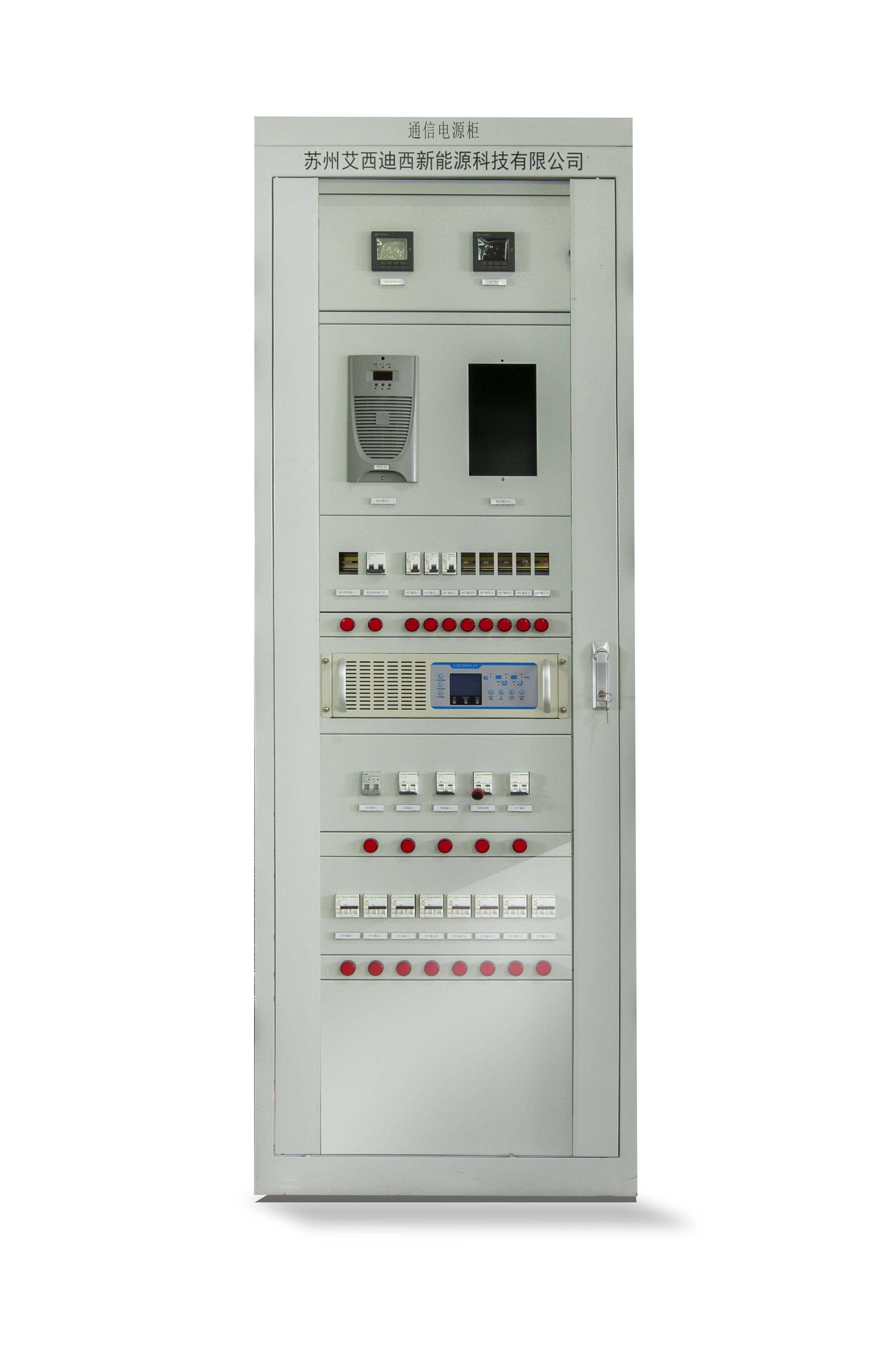
Jan . 09, 2024 11:49 Back to list
DISTRIBUTED ENERGY STORAGE-energy storage
Executive summary
Small-scale, clean installations located behind the consumer meters, such as photovoltaic panels (PV), energy storage and electric vehicles (EVs), are increasingly widespread and are already transforming our energy systems. In fact, 167 GW of distributed PV systems were installed globally between 2019 and 2021, which means their combined peak output is higher than combined peak consumption of France and Britain. In 2020, EV stock surpassed 10 million vehicles and almost 180 million heat pumps were in operation. Electrification, an essential condition for the transition to clean energy, is not only increasing power consumption, but also the quantity and variety of electrical equipment that can shift around their demand.
New, diverse technologies are helping consumers be more proactive and are prompting new players to enter power markets, such as aggregators who pool together small-scale resources and act on their owners’ behalf. Electricity production and trading are thus no longer limited to large, centralised generators and retailers. What is more, electricity no longer flows in only one direction, from the grid to the consumer. Instead, consumers can produce electricity for their own consumption or can sell it on the market, creating bidirectional electricity flows. Consumers are increasingly able to take control of their own energy demand through a complex web of interactive smart energy devices.
Distributed energy resources offer multiple benefits to consumers, support decarbonisation, and improve resilience
The primary beneficiaries of DERs are the consumers who own them. Distributed PV can supply affordable electricity to households and businesses, reducing their dependence on the grid. When paired with energy storage, PV systems help shield owners from outages, such as during extreme weather events. DERs enable consumers to produce and consume electricity more in accord with their own needs and preferences. DERs can also support decarbonisation in many other ways, especially by enabling fuel switching, such as when distributed PV displaces fossil fuel-based generation, and when EVs replace internal combustion engine vehicles.
Distributed Outdoor Energy Storage Cabinet Self-Cooling-PW-164
Rapid uptake of distributed energy resources can challenge electricity grids that are unprepared
Many of today’s grids were designed for the 20th-century, when the share of DERs was small. Now that a growing portion of electricity is produced by variable renewables, greater system flexibility is needed to consistently balance supply and demand, whether over short timescales or seasons.
Electrification, for instance, replacing gas boilers with heat pumps, can cause higher evening peak loads. Potential issues are not limited to changes in timing of demand; energy exported from distributed PV can increase local voltage levels, posing new challenges for grid stability. Although reinforcing the power grid can remedy these problems, it can be more cost-effective to incentivise consumers to preheat buildings when solar generation is abundant to shift heat pump loads away from evening peak hours.
Some DERs are technically capable of mitigating the challenges they themselves or other resources create. For example, battery storage systems can provide system flexibility, and smart EV charging systems can shift charging loads to reduce the evening peak demand. Unfortunately, many regulators and system operators have neither sufficient information on DERs nor adequate distribution grid monitoring equipment to take advantage of such capabilities. This lack of visibility can leave them unaware of the advantages to be gained by incentivising DER owners to align their equipment use and location with needs of the grid.
Digitalisation can transform distributed energy resources into valuable grid assets when the right incentives are in place
Digital technologies such as network monitoring devices and smart meters can improve visibility for distribution grids. Advanced inverters can enable consumers to monitor, programme and remotely control the power output of their distributed PV systems. Meanwhile, digital management systems can support aggregation of individual DERs and provide diverse services to multiple stakeholders all along the electricity supply chain. In these ways, digitalisation can help regulators and system operators adjust electricity prices and regulations to encourage consumers and aggregators to install and operate DERs in line with grid needs.
Multiple grid benefits of digitally enabled DERs
Open
Five technologies and solutions, each with its advantages and limitations, are particularly promising:
- Battery storage systems can provide a range of services to the grid, such as storing energy during excess renewable generation periods and discharging it during peak demand. Their main limitation is their relatively high upfront cost.
- EVs are versatile when used as mobile battery systems, though their value to the grid varies depending on charging technology and control strategy.
- Electric water storage and space heaters can provide system flexibility when equipped with low-cost control devices, though electrifying existing homes already equipped with gas services could require significant investment.
- Grid-interactive efficient buildings can optimise energy ‘prosumption’ (combined electricity production and consumption) while accommodating grid needs and offering a wide spectrum of grid interactivity. Employing the appropriate incentives can offer more benefits to the entire power system, as consumers would otherwise opt for combinations of technologies that best serve their own interests.
- Virtual power plants (VPPs), i.e. networks of decentralised power generating units, storage systems, and flexible demand, can optimise the aggregation of distributed resources across large areas by using advanced data analytics such as machine learning. Policy and regulatory issues, including value-stacking rules, are the main barriers to wider VPP deployment.
The majority of behind-the-meter DERs belong to consumers, and they decide whether and where to install them, and how to operate them for their own benefit. The frequent misalignment of DER owners’ and system operators’ interests due to the inappropriate consumer incentives may restrict the potential benefit of DERs to the grid.
To avoid such outcomes, regulators and system operators can create a level playing field where the grid contributions of DERs are appropriately valued, owners are fairly compensated, and system operators can more fully integrate DER services into the grid. Such better co‑ordination would deploy financial capital and physical assets more efficiently.
DERs stand to transform the way we produce, trade, deliver and consume electricity. To unlock the full potential of these resources, many aspects of electricity market design and regulation should be re-examined and, if needed, adjusted. The following insights set out the key areas in which action would accelerate DER deployment and integration.
Key electricity market design and regulation priorities
Open
Insight 1: Better visibility of distribution system and consumer dynamics
One of the main obstacles in integrating DERs into power systems is a lack of sufficient visibility into low-voltage grids and behind-the-meter resources.
To better understand them, policymakers, regulators and system operators can:
- Identify data gaps and plan to remedy them to obtain fit-for-purpose levels of visibility over the sector.
- Make the most of available data sources and create robust data management systems
- Develop a single flexibility resource registry common to all market participants and explore more-granular data collection options.
- Improve short-term demand forecasting, dynamic network modelling and long-term capacity planning.
Insight 2: Reliable and flexible grid connections for behind-the-meter resources
To mitigate the challenges of incorporating DERs into the grid while scaling up their deployment, regulators and system operators can:
- Update grid codes to require that DERs such as distributed PV systems have crucial advanced inverter functions, such as voltage/frequency ride-through (that enable DERs to remain online through minor grid disturbances) and voltage regulation.
- Prepare for potential challenges from the lower operational demand and system inertia that may accompany broader use of DERs.
- Introduce flexible grid connection arrangements that reflect the impacts of each resource.
Insight 3: Markets that welcome aggregated small-scale resources
In general, increased competition and improved system efficiency can lower costs. So long as system reliability is assured, opening markets to aggregated small-scale resources can have a positive impact.
Regulators and system operators can consider:
- Allow independent aggregators to participate in all types of markets, especially balancing, ancillary services and capacity markets, informed by pilot projects to gauge benefits and risks.
- Establish the roles and responsibilities for independent aggregators, especially in compensating retailers for energy transferred through demand-response activation.
- Lower the minimum bid size of market products, shorten procurement and delivery periods, introduce two asymmetrical (upward and downward) market products and allow prequalification of aggregated resource pools to avoid discrimination against small-scale resources.
- Develop market participation models that can better assimilate emerging resources, such as battery storage and the aggregation of heterogeneous technologies including distributed PVs, EVs and smart water heaters.
Insight 4: Fair market compensation for the multiple flexibility benefits of agile technologies at the grid’s edge
DERs are readily adaptable energy resources situated near sites of electricity use. This suits them well to provide flexibility along the supply chain for transmission system operators, distribution system operators, retailers and consumers.
Regulators and system operators can:
- Improve the temporal granularity of market prices by shortening settlement (or trading) periods for intraday and real-time markets.
- Improve the locational granularity of price signals, for instance through nodal pricing, flexibility marketplaces or network tariffs.
- Compensate DERs for the value of their flexible capacity, which helps ensure long-term resource adequacy for a renewables-dominant power system, for example by introducing reserve scarcity pricing complemented by a capacity remuneration mechanism.
- Establish market rules and co‑ordination platforms, including between transmission and distribution system operators, that help DERs stack multiple revenue streams while maintaining grid reliability.
-
AI-Powered EMS with GPT-4-Turbo | Efficiency Boost
NewsAug.01,2025
-
Optimized Storage System for GPT-4-Turbo | High Performance
NewsJul.31,2025
-
AI Energy Management System w/ GPT-4 Turbo Efficiency
NewsJul.31,2025
-
High-Performance Energy Storage System for Reliable Power Solutions
NewsJul.30,2025
-
Advanced EMS Solutions for Energy Management System & Storage Battery Companies
NewsJul.29,2025
-
Intelligent Energy Management for Homes - Efficient Storage Solutions
NewsJul.29,2025
























